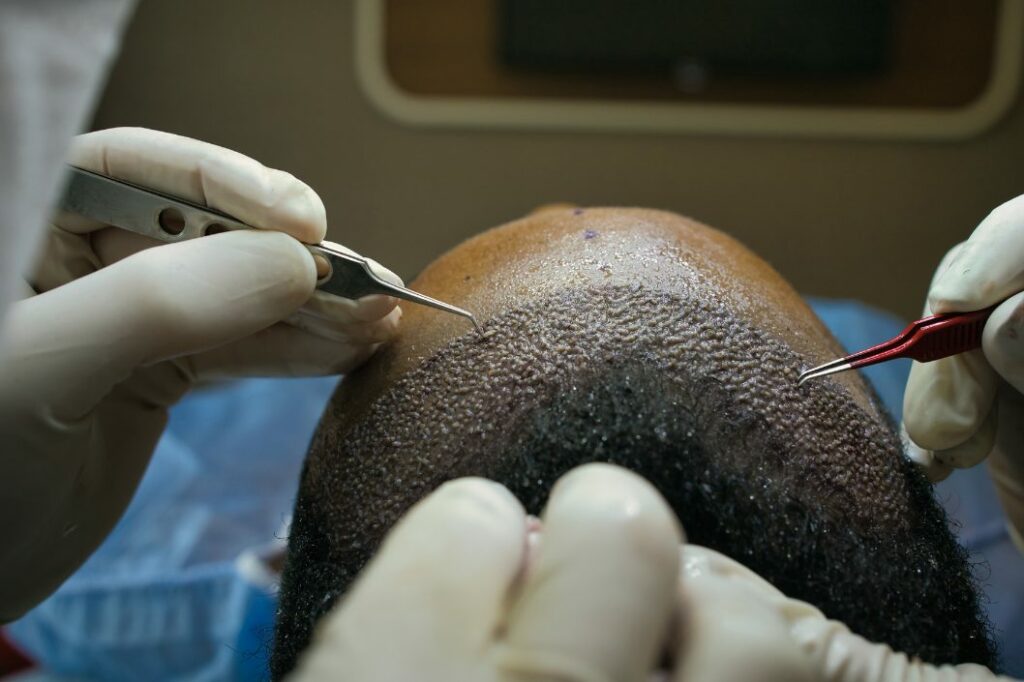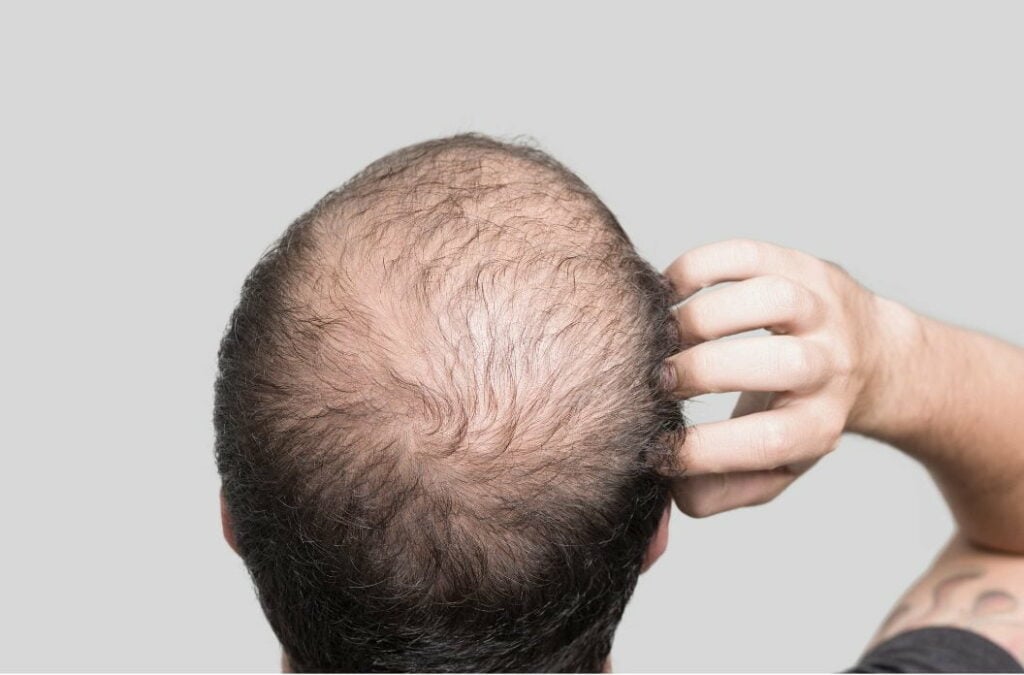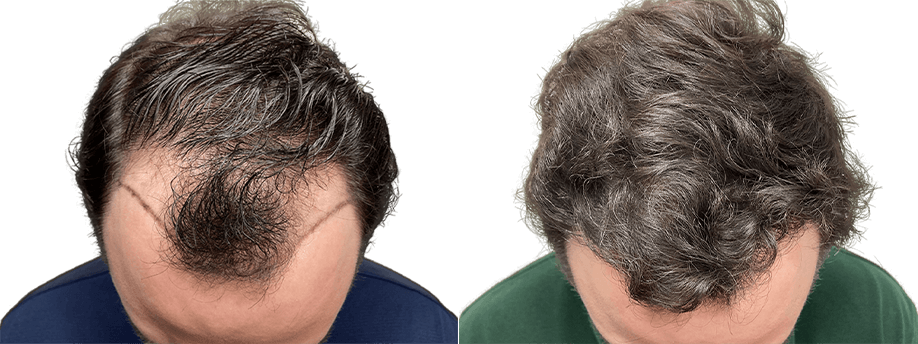What Can Go Wrong With Hair Transplant?
There are few circumstances in which something can go wrong with a hair transplant, especially if the patient is in good health and follows the pre- and post-operative instructions provided by their hair transplant surgeon in New York City; Greenwich,Connecticut; Chicago, Illinois; Washington D.C. and Northern Virginia; Houston, Dallas, Texas; Manila, Philippines; Dubai, Abu Dhabi,U.A.E.; and Karachi, Pakistan. In the overwhelming majority of hair transplants, the end result should closely align with what was discussed during the initial consultation between the doctor and patient. It is also during this time that the doctor will be able to outline any potential issues that could arise due to circumstances unique to the patient. A relative lack of available donor tissue, for example, could make it difficult to deliver the appropriate degree of coverage in the recipient site.
Can a Hair Transplant Go Wrong?

It is very rare for an entire hair transplant to “fail,” but it is possible that a small percentage of the transplanted follicular units will not take root and will therefore not produce new hair growth. Skilled surgeons in New York City; Greenwich,Connecticut; Chicago, Illinois; Washington D.C. and Northern Virginia; Houston, Dallas, Texas; Manila, Philippines; Dubai, Abu Dhabi,U.A.E.; and Karachi, Pakistan, are able to ensure this occurs with no more than five percent of the follicular unit grafts, with the majority of patients experiencing closer to a 100-percent success rate as a result of the transplant.
This is especially the case with surgeons who work with a team of nurses and surgical assistants, as desiccation is the most common reason for a follicular unit to fail. This occurs when the follicular unit grafts spend too much time outside of the body, which is why doctors use advanced technologies designed to preserve the follicular units and work with a team of medical professionals to ensure the procedure is performed in the most efficient manner possible.
It is worth noting that even though there is a difference between a “failed” transplant and one that does not meet a patient’s expectations, the cause is of little consolation to a dissatisfied patient. Fortunately, it is possible for patients who have experienced a “failed” hair transplant or can go wrong and to address any problems or to revise any issues associated with scarring.
Common problems with hair transplants
It is hardly accurate to refer to any problem with a hair transplant as “common” without adding a qualifier like “relatively.” With the continued advance of new technologies and procedures, hair transplants are remarkably effective and yield consistent, predictable results. This is especially true for patients who select an experienced doctor and a reputable hair transplant clinic.
The most common issue encountered during the hair transplant process has to do with factors outside of the control of the doctor, such as the availability of sufficient donor tissue. The problem is often exacerbated when a patient is seeking to achieve substantial coverage through a single hair transplant procedure, as it is simply not possible to cover large areas of the patient’s scalp without the availability of donor tissue.
Even though doctors in New York City; Greenwich, Connecticut; Chicago, Illinois; Washington D.C. and Northern Virginia; Houston, Dallas, Texas; Manila, Philippines; Dubai, Abu Dhabi,U.A.E.; and Karachi, Pakistan, are able to obscure the visibility of the scar, patients who have undergone FUT procedures in the past sometimes wish to have the scar revised or corrected through an additional procedure. Patients who underwent an FUT procedure long before recent advances in medical technology or who wish to switch to a shorter hairstyle tend to be chief among those who seek scar revision procedures, as the horizontal scar left behind following an FUT procedure is now quite easy to cover up with the patient’s own, naturally growing hair.

The best way to address any potential problem with a hair transplant is to seek out the assistance of an experienced and reputable hair transplant surgeon who possesses a clear track record of success performing hair transplant procedures. This includes problems associated with a lack of adequate coverage or problems associated with a failed hair transplant in which far too many grafts failed to take root in the patient’s recipient site.
How to address problems with a hair transplant?
Patients with inadequate coverage but sufficient donor tissue available can easily address their hair transplant issue with additional sessions of FUE or FUT. Of course, patients requiring multiple sessions of hair restoration should have been informed of the need for more than one transplant right from the outset during the initial consultation process, but, unfortunately, this is not always the case.
Patients who are dissatisfied with the result of their hair transplant due to the failure of the grafts to take root can also undergo additional sessions to achieve the coverage they initially sought, provided, of course, that there is sufficient donor tissue still available for use in future sessions. These patients should also seek out the expertise of an experienced hair transplant surgeon at a hair transplant clinic in Houston, New York City; Greenwich, Connecticut; Chicago, Illinois; Washington D.C. and Northern Virginia; Houston, Dallas, Texas; Manila, Philippines; Dubai, Abu Dhabi,U.A.E.; and Karachi, Pakistan, to identify the cause of the initial hair transplant failure in order to avoid a reoccurrence of the issue.
Can a hair transplant scar be revised or corrected?
Each and every patient who undergoes any medical procedure is unique and may therefore heal differently than others. This simple fact might cause the horizontal scar left behind by FUT to be more visible than they hoped, especially in patients who underwent FUT or other hair restoration procedures many years before medical technology made it possible to leave a far less noticeable scar behind. Patients with a visible hair transplant scar have several options available for hair transplant scar revision or correction, including each of the following:
- Scalp micropigmentation
- Dermal fillers
- Cortisone / corticosteroid injections
- Dermabrasion
- Excision
The most effective course of action for hair transplant scar revision or correction will depend on a number of different circumstances, so it is always best for the patient to discuss the various options with a skilled hair transplant surgeon via an initial consultation at a hair transplant clinic in New York City; Greenwich, Connecticut; Chicago, Illinois; Washington D.C. and Northern Virginia; Houston, Dallas, Texas; Manila, Philippines; Dubai, Abu Dhabi,U.A.E.; and Karachi, Pakistan. A scar that appears concave, for example, may be best addressed through the use of dermal fillers. A thick or raised scar may benefit most from a cortisone injection.
What is Scalp Micropigmentation
Scalp micropigmentation is an increasingly popular option for hair transplant scar revision or correction, as this process is perhaps the most versatile and most effective of all the aforementioned options. This non-invasive, non-surgical option involves the injection of a specialized pigment at a shallow depth, which recreates the appearance of naturally growing hair and therefore obscures the scar so that it is no longer noticeable.
How does a good surgeon correct a wrong hair transplant?
Hair transplant procedures are designed with the goal of providing the patient with a natural-looking hairline and thick head of hair that restores a sense of self-confidence and improves the patient’s self-esteem. A bad hair transplant does not accomplish any of this, and in many cases will make the patient feel less confident than ever before. This is why it is so important to seek out the assistance of an experienced and exceptional hair transplant surgeon right from the beginning so that it is not necessary to consider how one can go about correcting a bad hair transplant.
Contact your Hair Transplant Specialist; MAXIM Hair Restoration
Patients who are dissatisfied with a bad hair transplant have many options available to them, all of which can completely transform a bad hair transplant into the exceptional hair transplant they sought in the first place. Assuming there is more than enough donor tissue available, a hair transplant surgeon at a reputable hair transplant clinic in New York City; Greenwich,Connecticut; Chicago, Illinois; Washington D.C. and Northern Virginia; Houston, Dallas, Texas; Manila, Philippines; Dubai, Abu Dhabi,U.A.E.; and Karachi, Pakistan, can perform an FUE or FUT procedure to address the lack of coverage yielded by the first hair transplant.
These same procedures can be used to address issues associated with a hair transplant that does not appear as natural as it should, as a good hair transplant surgeon understands how to artistically craft a hairline so that it is so natural-looking that the transplanted grafts are indistinguishable from the patient’s own natural hair.
Some patients may have experienced additional hair loss since undergoing a hair transplant procedure, which can make a good hair transplant look bad. Although it is recommended that patients wait until their hair loss has stabilized before undergoing a hair transplant, it is sometimes the case that hair transplants are performed while a patient’s hair loss is still ongoing. A good hair transplant surgeon can use the FUT or FUE procedures to ensure that any new hair loss is properly addressed and that the original hair transplant procedure is corrected when it’s wrong.

